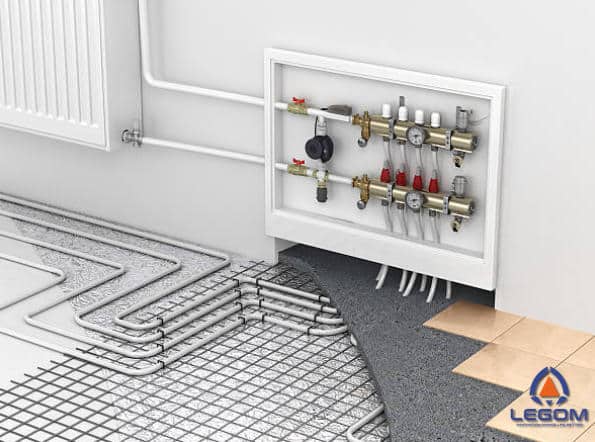
Hydronic heating panels in some regions are now hitting their popularity. It can be seen from the installation data. Many residents and public places have started to use it as an environmental controller. The reason behind its popularity is its advantages. This device possesses some points that other devices don’t have. Before jumping to the good thing about this device, let’s get to know it first.
Contents
How do Hydronic Heating Panels Work?
The main material that is used to heat the environment is hot water. Compared to the other environmental devices, the main material is the same. The hot water creates a warm environment. However, the heat delivery process is different. This device radiates the heat to the targeted room. The options for radiating the heat include underfloor systems, convectors, and the most common: wall-mounted panels.
Unlike typical systems that diffuse heat using blowers or fans, this system radiates heat directly. Some users say that with this method, the result is more comfortable than if the device warms the air. Sometimes when a device targets the air, the warmth is not so comfortable for breathing. The distribution of this method is one of the best.
The heat is sent with thermal radiation. Rather than playing with the air, this device transfers the warmth to the entire room with the technology of electromagnetic radiation waves. The type of warmth is fixed in one spot (and the radiance range). It cannot be blown by a blower or fan. Cold spot is absent and the distribution is more even with high consistency.
This system is a versatile category with very efficient energy use. It also can work together with a thermostat if the homeowner wants a different setting for each room. The thermostat used in this system also controls the device whether it will be on or off. When everybody is out and the building is empty, it is better to switch off to save energy.
Hydronic Heating Panels: Is It a New Thing?
When talking about the beginning of something, it doesn’t have a relation to popularity. A thing might be popular now but in fact, it was invented a long time ago. It also happens to this heating system. Begin with the underfloor heating system that was invented around the 14th century. The very first system that had a similar principle (using radiation) was ‘hypocaust’.
Since then, the environment controller began to grow rapidly with various types and products. However, at that time, the technology might not be as sophisticated as now. Therefore, although there were various types, they needed improvements.
Time after time, the technology developed significantly including the design. Hydronic heating panels do not interfere with the other furniture in your home. It can even become one of the ‘furniture’ to beautify the room. It can be mounted to the wall vertically or horizontally, in accordance with the interior design.
The thickness is not much which makes the appearance just like a painting hanging on the wall. The installation is easy, no building of a new house is required just to have this as the heating system. No big renovation is needed too. In other words, this device is suitable for both a new home and at once an existing one. Because no big renovation is needed, it also affects the budget.
Hydronic Heating Panel Parts
There are 4 main components that work together in this device to create a comfortable environment. The list will be sorted from the most visible part.
Underfloor Heating System, Convectors Or Radiator

This component is responsible for the ‘bullet’ to shoot the warmth into the room. The shapes, sizes and types are abundant and available in the market. The choice of the type, brand and model depends on the design that you want.
A Pump
A pump deals with pressure to move the fluid in it. This is the component that makes the water circulate.
Pipework
This part is the path for the fluid to head somewhere. In this case, the pipework gives a path for the hot fluid to move from the central heating (boiler) to the radiate device. Then, this gives the path for the fluid to go back to where it was (circulate).
Boiler
This device will turn the cold fluid into a hot one. The desired temperature can be controlled by adjusting the thermostat.
One more component is the thermostat. However, this one is an additional component as a complement. The suggested one is the programmable thermostat. With this device, the homeowner can flexibly set the temperature. Not just one spot, but also the other rooms. It is a global control that helps to boost efficiency.
To sum up, this heating device radiates to diffuse the heat is one of the best environmental controls. So, are you interested in installing hydronic heating panels?
